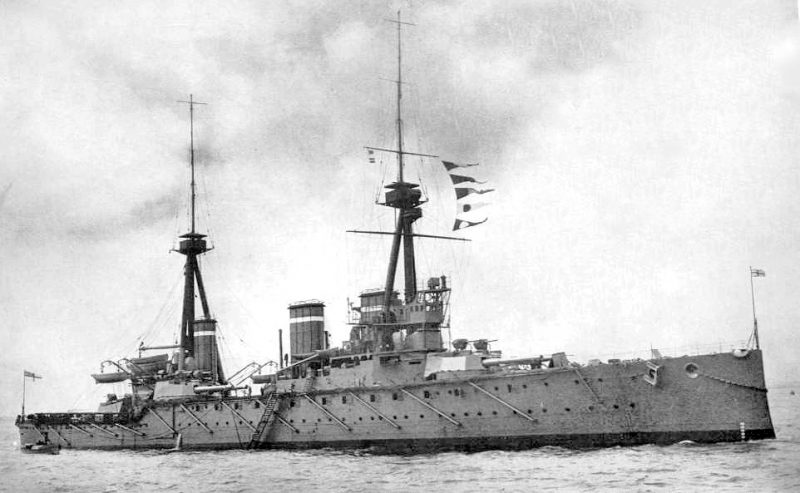HMS Invincible was built by Sir WG Armstrong, Whitworth & Company on Tyneside. She was launched on the 13th of April 1907 and had an eventful first couple of years of life. While still to be fitted out she was hit by the Collier Oden resulting in serious damage and after being officially handed over on the 16th of March 1909, she collided with the brigantine Mary Ann on the 19th of March on her maiden voyage to Portsmouth.
She was a British Navy battle cruiser, 567 feet long and displacing 17,500 tons, and was the lead ship of her class, as she was the first battlecruiser to be built anywhere in the world. In WWI she took part in the Battle of Heligoland Bight and then the Battle of the Falkland Islands where she and her sister sunk the German cruisers Scharnhorst and Gneisenau. Her claim to fame was that she was the flagship of the 3rd Battle Cruiser Squadron during the Battle of Jutland where she was sunk when a round pierced her ‘Q’ turret resulting in a massive explosion that killed more than 1000 men.
She now lies under 50 metres of water in the North Sea, near the coast of Denmark’s Jutland Peninsula. As a war wreck, she is protected as a grave site, but she does host regular dive tours. Recently divers led by Mark Dixon dived on the wreck and brought back eerie images of this magnificent vessel in her watery grave.
Interviewed by The Mirror, Steve Slater, one of the divers, said “She lies in 50 metres of water with underwater visibility in excess of 15 metres. Descending to the wreck, the first features that became visible were the twin barrels of X turret. Still pointing out to starboard, the breeches at the back are closed, indicating that they are loaded and ready to fire. It is quite sobering to think that 70 people, the average size of a gun crew, would have been in that exact location when she was hit. Moving forward we passed numerous smaller four-inch guns, ammunition, and shells, evidence that this was an enormous warship. The most moving items, however, were the personal ones, like ceramic pots, knives and forks.”
The divers were very sensitive to the fact that the vessel is a war grave, and they held a short memorial service and laid a wreath at the site. Slater said, “HMS Invincible is a war grave and we were very respectful of the fact that 1026 sailors lost their lives at this very spot.”
https://www.youtube.com/watch?v=zgZ8JEiu_AQ
